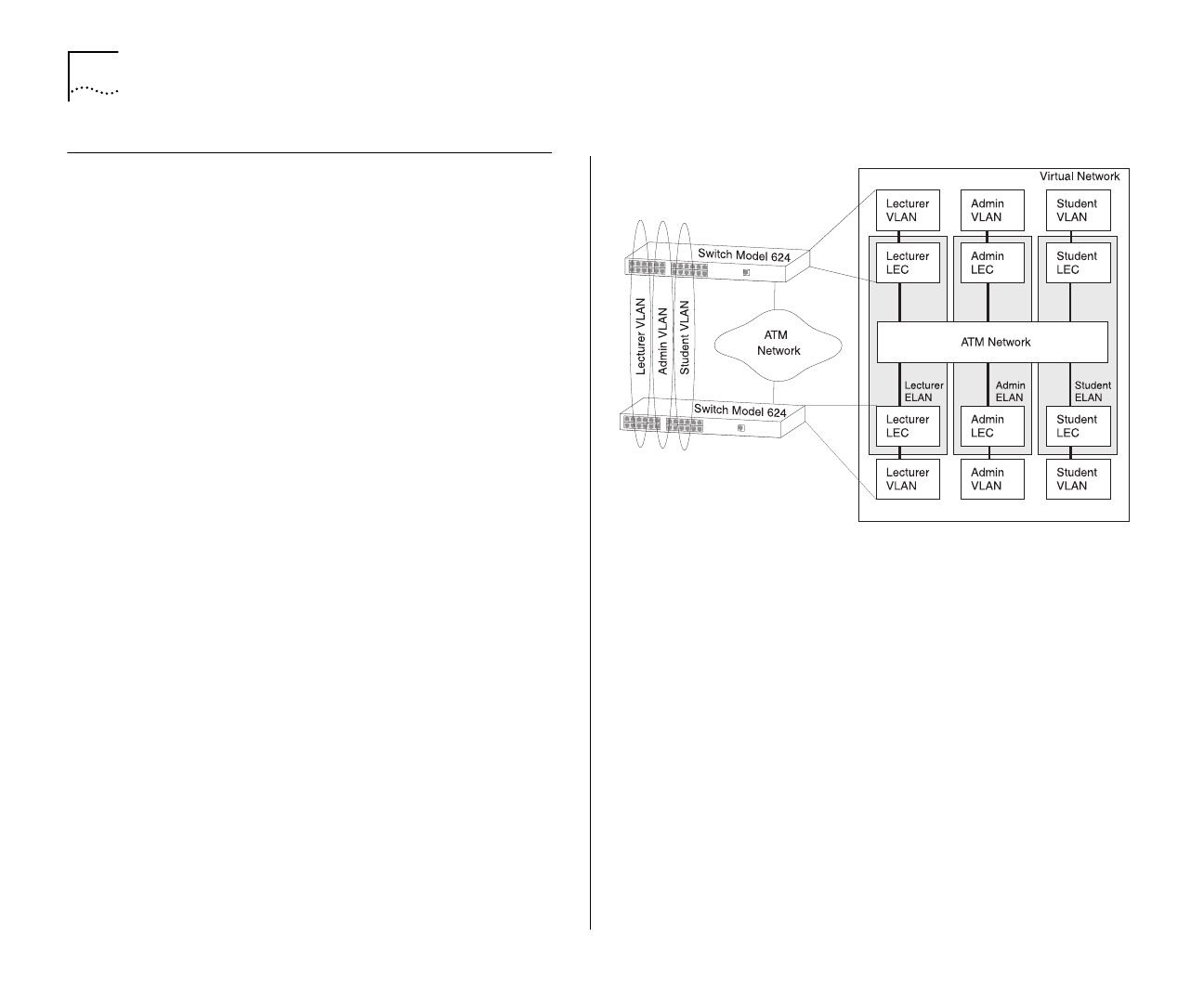
3-2 C
HAPTER
3: V
IRTUAL
LAN C
ONCEPTS
Extending VLANs into the ATM Network
You can use LAN Emulation
to define and extend
VLANs seamlessly through the ATM network, as
shown in the example in Figure 3-3.
Traffic from one
Emulated LAN (ELAN)
is not seen on
another ELAN as they are logically separate domains.
For this reason, when you plan your network, you
should consider what ELANs you require, and how
the VLANs will map to these ELANs.
The ATM Module has a LEC for each of the Switch’s 16
VLANS, and each VLAN/LEC can be mapped onto an
Emulated LAN (ELAN)
. In this way, Ethernet traffic is
mapped to an ELAN by a VLAN-to-LEC association. The
mapping of VLANs to ELANs is shown in Figure 3-2.
When an Ethernet device attached to a Switch
generates traffic, the Switch forwards the frames to
the appropriate port.
A unicast frame is only forwarded to a port if the
address of the destination device is known to be on
that port and the destination port is in the same
VLAN as the source port. If a unicast frame is
forwarded to the ATM port, the ATM port uses the
destination MAC address to identify the ATM
connection to use.
A broadcast or multicast frame is forwarded to all
ports in the same VLAN as the source port. If a frame
is received by the ATM port, the ATM port forwards it
to the BUS for the associated VLAN.
Figure 3-2
VLAN to ELAN Mapping


















